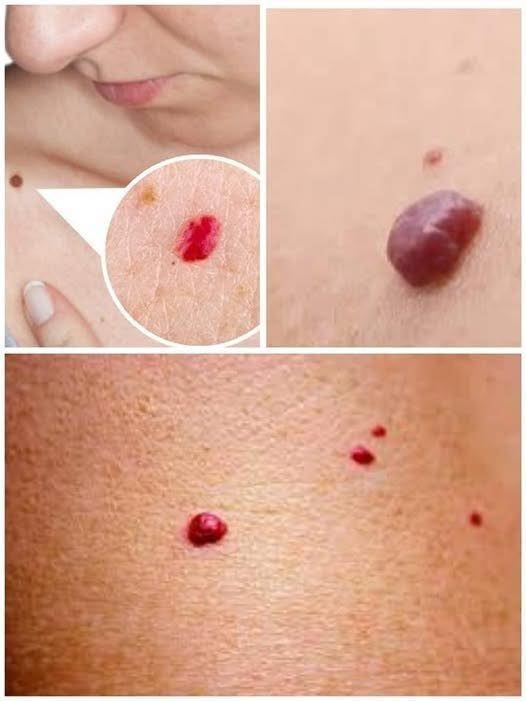ADVERTISEMENT
**If You Have Red Moles, It’s a Clear Sign That Your Body…**
Moles, or skin growths, are a common feature on many people’s bodies. They come in all shapes, sizes, and colors. While most moles are harmless and benign, some can offer significant insights into your health. Among the different types of moles, red moles stand out due to their distinct color and their potential to signal certain health conditions in the body. The presence of red moles, also known as cherry angiomas, can indicate several underlying issues or changes in your health that should not be ignored.
In this article, we will explore the causes of red moles, what they might mean for your health, and when you should seek medical advice. By understanding the relationship between your skin and your overall health, you can better identify potential risks and take steps to improve your well-being.
### **What Are Red Moles (Cherry Angiomas)?**
Red moles, or cherry angiomas, are benign (non-cancerous) skin growths that are typically red or purple in color. These moles are made up of clusters of small blood vessels that have grown abnormally close to the surface of the skin. Cherry angiomas can vary in size, shape, and number, and they may appear anywhere on the body. They are particularly common in adults over the age of 30 and are more prevalent as people age.
Red moles are usually smooth to the touch, and they can range in size from a tiny dot to a larger, raised bump. While cherry angiomas are generally harmless and do not cause any pain or discomfort, they can be a source of concern due to their appearance.
### **Causes of Red Moles**
The exact cause of cherry angiomas is not fully understood, but several factors are believed to contribute to their formation. Here are the main causes and contributing factors:
#### **1. Genetics**
Genetics play a significant role in the development of red moles. If you have family members who have numerous cherry angiomas, it is likely that you will develop them as well. This hereditary factor suggests that there may be a genetic predisposition to the growth of these benign moles.
#### **2. Age**
As people age, the likelihood of developing red moles increases. The majority of individuals will start to develop cherry angiomas in their 30s or 40s, with the number and size of these moles typically increasing as they get older. It is believed that the aging process weakens the blood vessels, leading to the development of these growths.
For Complete Cooking STEPS Please Head On Over To Next Page Or Open button (>) and don’t forget to SHARE with your Facebook friends
